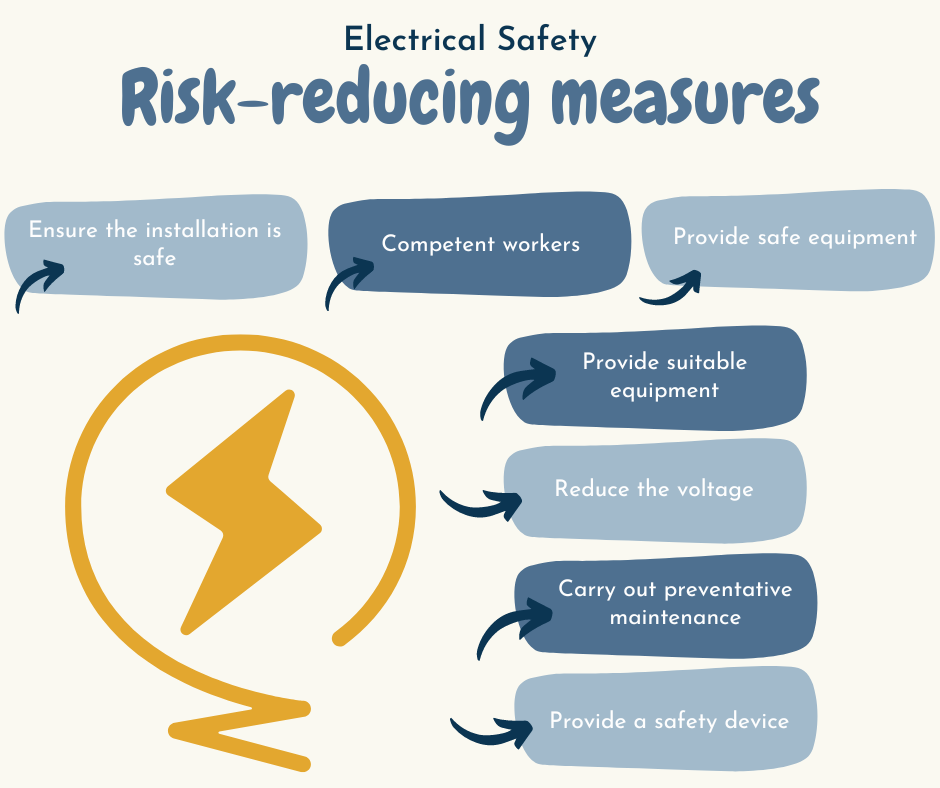As part of May’s Hazard of the Month, Electricity, we’re highlighting two key areas: Electrical Safety & Lock Out Tag Out.
Electrical Safety
 Electricity presents a serious hazard in the workplace, with the potential to cause severe injuries, fatalities, and significant property damage. Even shocks that aren’t fatal can lead to long-term or permanent injuries. Because of these dangers, it’s essential to establish strong safety protocols and ensure that workers can recognise electrical hazards.
Electricity presents a serious hazard in the workplace, with the potential to cause severe injuries, fatalities, and significant property damage. Even shocks that aren’t fatal can lead to long-term or permanent injuries. Because of these dangers, it’s essential to establish strong safety protocols and ensure that workers can recognise electrical hazards.
To minimise the risks associated with electrical equipment, the following measures should be taken:
-
Ensure proper installation: New electrical systems must comply with relevant safety standards, and existing systems should be regularly inspected and maintained.
-
Employ qualified personnel: Only trained, competent workers with the appropriate knowledge and skills should handle electrical equipment.
-
Use safe equipment: All equipment must be in safe working condition when provided and must be routinely maintained to remain reliable and secure.
-
Select appropriate equipment: Ensure that the tools and devices used are suited to the specific task and the working environment.
-
Lower voltage levels: Use the minimum voltage necessary to perform the task safely.
-
Implement preventive maintenance: Establish maintenance routines in consultation with equipment users, based on the likelihood of failure and the potential consequences.
-
Install protective devices: Use Residual Current Devices (RCDs) for equipment operating at 230 volts or higher. These devices detect electrical faults and quickly disconnect the power, offering an extra layer of protection.
Lock Out Tag Out
 A Lock Out Tag Out (LOTO) procedure is designed to safeguard workers from the hazards posed by live machinery during repairs, replacements, or maintenance tasks. The process involves seven essential steps:
A Lock Out Tag Out (LOTO) procedure is designed to safeguard workers from the hazards posed by live machinery during repairs, replacements, or maintenance tasks. The process involves seven essential steps:
-
Preparation: Assess and plan the shutdown process. Identify all sources of energy and evaluate the system’s power levels. This step ensures all potential risks are addressed to protect personnel.
-
Notification: Inform all affected individuals, such as operators, technicians, or supervisors, about the planned shutdown. Clear communication ensures everyone understands what will take place.
-
Shutdown: Power down all equipment.
-
Lock Off: Secure all energy sources in the off/safe position using lockout devices (e.g., padlocks) to prevent accidental re-energisation during the work.
-
Test: Confirm that the machinery is fully de-energised by testing the controls and ensuring no electrical energy remains.
-
Servicing: Perform the required repair, replacement, or maintenance activities.
-
Return to Service: Once the work is complete, remove all lockout devices and restore power. Alert all personnel before reactivating the equipment and verify that the area is clear and safe.
Learn more about lock out tag our procedure with our Lock Out Tag Out Online Training Course. Get 10% off this course with the code ‘elec10’!

Electrical Safety and Lock Out Tag Out training courses are essential tools in staying safe when working near or with electricity. Make sure you don’t miss out on our 10% off deal on these courses, available until the end of May. Simply enter the code ‘elec10’ at checkout to save!
Read more Safety Spotlight blogs here
To keep up to date with the latest health & safety news and advice, follow us on social media:
